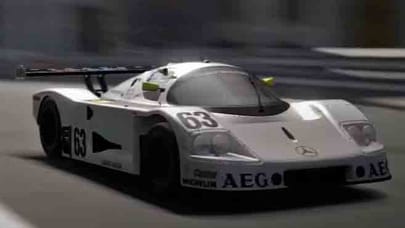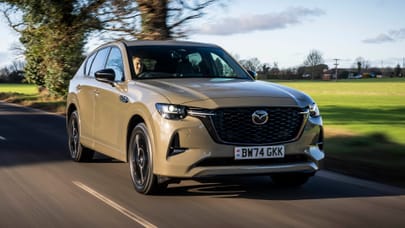

It would take an uninformed owner a while to find the engine in Renault's new Twingo. Should they begin under the bonnet - which is really just a plastic panel - they'd find only a battery, a radiator and a reservoir for the screen wash. Feeling a soupçon short-changed, they might assume the only way Renault could afford to sell the car for £9,495 is to forego the trivial business of propulsion. In fact, it's a wonder it costs so little, given the expense of making the engine fit where the new keeper would eventually find it: in the boot, under the floor.
Words: Dan Read and Paul Horrell
Pictures: Rowan Horncastle and Lee BrimbleThis feature was originally published in the October 2014 edition of Top Gear magazine.
Advertisement - Page continues below
Why's it there? It's a matter of squeezing in all the necessary things that make a car a car while a) conforming to crash-safety rules, and b) making a tiny car feel like a big one inside. In a traditional layout, the bonnet houses not only the engine, but also a scrunchy zone to absorb impacts before they reach your legs. Unless you meticulously plan your crashes so you arrive at an accident backwards, it's impossible to move this bit to the rear of the car. The engine, on the other hand, can go wherever you like, and - by removing it from its usual home - you reduce the length of the nose, push the wheels to the corners and so stretch the available cabinspace.
Alright, so now it uses up some bootspace, but if you tilt it 49 degrees it'll fit under the floor. Logic also suggests it should power the nearest set of wheels, which happen to be the rear ones. No point in undoing your hard work by running cumbersome shafts back down the car to drive the front ones, eh? The result of all this means you have a rear-engined, rear-wheel-drive machine much like a Porsche 911. Sort of.

Renault released the first Twingo back in 1993, in left-hand-drive only. At the time, it was the cheapest car in Europe, and unfortunately that's where it stayed because you couldn't buy one in the UK. This didn't stop holidaying Brits getting their hands on rentals and falling for its buggish looks and clever monobox design, with sliding rear seats to expand or contract bootspace as required. But let's not forget, just because it was small and simple doesn't mean it was cheap to make. Expense comes not in the form of physical materials, but rather in the engineering and design, because a small car requires as much thought - if not more - as a big one. Especially if you put the engine at the back.
Advertisement - Page continues below
For Renault, and for this third-generation Twingo, this would have been impossible if it weren't for a collaboration with Daimler. The Twingo shares its building blocks with the upcoming Smart ForFour, and both will be built at Renault's factory in Slovenia, saving the two companies a large chunk of cash. Even with a £350m tooling and facilities upgrade, the cost savings are far greater than had they not teamed up. If they had gone solo, the new Twingo would likely have been a cheap Dacia, and Smart may not have made anything at all.
Of all the benefits of sending the powertrain rearwards, perhaps the most important is manoeuvrability. As there's no engine to impede the sweep of the front wheels, they can turn through 45 degrees like a pair of rudders, where most cars make do with about 30 degrees before they bump into stuff. At full lock, they sort of flop over like a 2CV's, which means you can move crabwise into parking spots with just a baguette's width to spare at each end. Combine this with very short overhangs (if you peer over the dashboard you can pretty much see the Renault badge on the front) plus light steering, and it's almost as parkable as a Toyota iQ, without being novelty-small.

If there's a trade-off, it's the reduced bootspace, or rather boot depth. But what's more importantin a little runabout: outright space or parkability? For most of us, it ought to be the latter, because it's unlikely you'll have to carry four humans and their luggage in a car like this. That said, the Twingo is still a proper four-seater, it now has five doors and the cabin is 33cm longer than it was before - despite the whole car being a touch shorter than the last one. That's black magic, that is, and proves that the bootspace metric doesn't tell the whole story.
Also, the rear seats fold down and the front passenger backrest flops forwards, creating a space long enough to accommodate an especially lanky basketball player. Or a flat-packed Ikea bookcase, according to Renault. There's a hollow storage area under the rear seats bordered by netting to stop things rolling about. And, as the rear windows pop out rather than slide down, the door cards have been scooped out to give more elbowroom.

The five-door VW Up does a similar trick with the folding front seat, but loses out in overall cabin space because it's shorter and sticks with an engine-up-front arrangement, like almost every other city car bar the electric Twizy - another Renault creation. Sure, there are plenty of other city cars with five doors, but your passengers will be squished. And as small cars grow bigger and bigger, the Twingo's future-proof layout should keep it small.
We're driving in Nice, where the locals love the Twingo like Brits love an original Mini - it stirs their inner Frenchness in the same way as brown mustard or a delicious baked snail. Binmen, butchers and boulangers all hold up their cameraphones as we drive around. Would the Germans feel such affection for an Up? Doubtful. The Twingo, however, strays from the purely functional to the vaguely emotional.

Our red car has a 1.0-litre triple making 69bhp and 67lb ft. There's also a turbocharged 0.9-litre with 89bhp and 99lb ft, which Paul Horrell is currently driving somewhere in the countryside. He'll tell you about it shortly, but I suspect his superior torque makes for a better drive. My engine might be a smidgen bigger, but I'm riding the clutch to avoid juddering at low speed. Given the car's other city-going talents, this is a bit of a downer. Oh, and if you fancy measuring the 0-62mph time, give yourself at least 14.5 seconds.
The suspension consists of MacPherson struts up front and a De Dion axle (essentially a semi-independent, beam-type set-up) at the back, strung beneath the engine. It does a fairly good job of sucking up crashes and bangs as you surf city-centre potholes, but there's a little shimmy over bumps as the engine-heavy rear end follows the chassis around. But maybe it was born to move its hips a little. Did you know that ‘Twingo' is a blend of the words ‘twist', ‘swing' and ‘tango'? It's true.
But enough of all this. It's time to slide back the roof - an £850 option - and enjoy the sun before it drops into the shiny blue sea. I'll leave you now, and hand over to m'colleague Paul Horrell, who has his hands on that mighty 0.9-litre turbo...
Advertisement - Page continues below
Thanks, Dan. Ah yes, mighty. Well, maybe not.
Quatre-vingt-neuf chevaux does not a supercar make. Or even a hot hatch. But there are few cars that compete with this turbo Twingo's combination of power, light weight and turbocharged stomp. And I'm liking it a lot. The little triple is willing and able. If you want to overtake, jam it down to third or even second because it's a bit hobbled by eco-biased gear ratios that are as long as a V8 Buick's. Get into the right gear and it'll happily shrug its way past most things. No bother to do so, because the gearshift is good for a rear-engined car. Indeed pretty good, full stop. And because the engine is behind you and its exhaust doesn't run beneath your feet, its sound is cheery but mellow and distant.
Never mind that the rear engine confers big-inside/small-outside packaging and a brilliant turning circle, both noted by Dan for their unique excellence in his city slicking. The rear engine, it turns out, also makes the car feel special out here in the sticks. It goes down the road in its own particular and engaging way.

The front end carries many fewer kilos than normal, so it bobs around a little, while the tail squats more firmly. If you've driven mostly FWD tackle, this feels a bit light-headed. But you soon realise it's just another way of the car telling you what's passing beneath. It's not uncomfortable, and it doesn't unsettle your path. At the risk of sounding up myself, Porsche 911 or Lotus Elise drivers will know about this.
To be honest, you need all the info you can get, because not much comes through the steering. At least this 89bhp version gets a progressive rack, so it's relieved of the traction-engine twirliness that Dan found in the 69bhp jobbie's steering. And, sorry to disappoint, but the ESP won't get out of yer face, so no rear-drive slidiness is possible. The fun comes from judging the speed of pouring it in, so it balances up and stays just beneath the ESP threshold. On tight and snaky roads, it darts about like a happy insect.
Advertisement - Page continues below
The suspension is decently comfortable too, if not Up to the cringingly named VW's standards. And there's some wind noise at a fast cruise. But at least the engine's turbocharged gumption lets you cruise fast and get a share of the outside lane, even up motorway hills. That's simply not possible in most rival tots.
All this and it's still supposed to make 65.7mpg, equivalent to 99g/km CO2. But I wouldn't get such saintly results, because I'd be too tempted to flog its happy little heart out. Down by the gearlever you'll find an Eco button, which limits boost to force you into going gently. I did use it, but only in towns, because the early-production engine has a slightly messy and unprogressive accelerator calibration, and it's more progressive in Eco mode. I just happen to be a bit fastidious about accelerator tip-in and driveline shunt. Sorry.

The Twingo's seat is a good place to be. The one-piece chair wraps around you, which is another thing goading you into a cheeky style of driving. A universal mount holds your phone in clear sight, and a downloadable app puts your music and phone contacts under the control of the steering-column switches. The dash doesn't have a rev-counter or trip computer, but the app does. That's a sign of the sensible and creative thinking all over this car. And thanks again to the rear engine, there's masses of glovebox and other storage space in handy reach. It makes the Twingo feel like it's on your side. And it looks good in here, which is a handy distraction from the fact that cars at this price don't get lush cabin materials.
What price? Well, you can only have the 89bhp engine if you spring for the top trim level, at £11,695. Still, it's decently equipped. Our tester has some extra stuff like the big screen and various visual jazz-ups, but if you tread carefully with the good-value options list, you can make it feel like yours without spending a fortune.

Good on Renault for doing the Twingo. Packaging aside, the company has made a car that also drives well. And the styling is brilliant. It doesn't look like a big car shrunk down; neither has it come over all twee, coquettish or cartoon-cute as many baby cars have tried - and often failed. It has its own confident identity.
The goodness of the Twingo is here and now in the 89bhp turbo. That said, there will be a faster one later, and Renault bosses don't hide it. Though they refuse to be specific about what they'll do to transform it. Here's an idea they can have for free. Leave this compact turbo-triple unaltered in the boot, but lengthen the nose just enough to stuff another one under the bonnet. There: a 4WD bi-motor. That'd be an actual Twin-Go.
Trending this week
- Electric
Top Gear's top 20 electric cars









